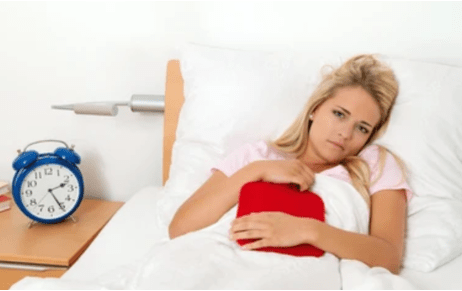INTRODUCTION When a woman experiences her period or menstruates, the menstrual cycle begins. A woman's…
Examination Guidelines/Standards – Indian Patent Office
This article relates to a recent judgment of IPAB for a patent application 2254/DELNP/2005 which was refused to proceed further by the Indian patent office. The judgment illustrates the mode in which decisions are established by the patent office during the examination/prosecution phase.
Brief summary of the case
The patent application relates to “A New Crystal Form of Adefovir Dipivoxil and its Composition” and was filed by Tianjin Kinsly Pharmaceutical Co., Ltd, China on 26th May 2005 bearing patent application number 2254/DELNP/2005. The application claimed a new crystal form of Adefovir dipivoxil {9-[2-[[bis[(neovaleroxy)-methoxy] phosphinyl] methoxy] ethyl] adenine} and its composition, and the method to prepare the crystal. However, the patent office refused to proceed further on the basis that the claims were not allowed on account of section 3(d) of the Patent act, 1970, and the inability of the Applicant to provide evidence showing enhanced efficacy. Furthermore, the patent office held that the claims 4-7 were not allowable under section 3(e) of Patent act 1970 while claims 7-10 were beyond the scope of limit.
The applicant for the said application challenged the order given by the patent office in the Intellectual Property Appellate Board (IPAB).
We herein evaluate the decision given by the Patent office in a stepwise manner as follows:
First paragraph of the order of the Patent Office:
“1. The present invention relates to a new crystalline form of a compound and its composition, and in particular, to a new crystalline form of adefovir dipivoxil with the nomenclature of 9- [2-[bis(pivaloyloxy)- methoxy] phosphinyl] methoxy) ethyl] adenine and a composition containing that new crystalline form.
“The claim 1-4 could not be allowable under section 3(d) of patent act 1970, and the agent has not able to prove to enhance efficacy. There is no data submitted in the complete specification for a clinical trial on a human being, “for the support of therapeutical efficacy. “The experimentation must be done with the human body, for testing a drug on a lion or a horse or monkey might not prove anything about its effect on man”.
The applicant appealed before the board that the above order is a mere collection of lines taken from an extract of an article from the internet. The article which was published by David W. TSCHANZ, MSPH, Ph.D. is cited below:
“Ibn Sina and Clinical Trials
Discussing Ibn Sina is like ………………………….. These principles still form the basis of modern clinical drug trials.
1. The drug must be free from any extraneous accidental quality ………………………………………………………….. if this did not happen, it was an accidental effect. 7. The experimentation must be done with the human body, for testing a drug on a lion or a horse might not prove anything about its effect on man.
The board states that the order given by the patent office is a word to word copy from the above source provided as evidenced by the Applicant.
Second paragraph of the order of the Patent Office
“2. What is the clinical trial?
A clinical trial (also called a clinical study) is a medically supervised procedure in which investigational drugs are given to patients for a set period of time while changes in the patients’ disease and overall health are monitored through physical examinations and laboratory tests. Typically, during the time patients are taking a drug, they make periodic visits to the doctors in charge of the trial. On these visits, patients usually provide information about how they are feeling, undergo physical examinations, and are given diagnostic tests meant to measure how their condition is responding to the drug. Clinical trials can vary in length from days to years, depending on how long it takes to measure the effect of the investigational drug on the disease being treated.”
The counsel of the Applicant argued before the board that the order is a word by word copy from the extract from Procter & Gamble’s website with even the same font size and same spacing.
THIRD PARAGRAPH OF THE ORDER OF THE PATENT OFFICE
The 3rd paragraph of the order was:
“3. Five (5) different types classifying trials:
- Prevention trials: look for better ways to prevent disease in people who have never had the disease or to prevent a disease from returning. These approaches may include medicines, vitamins, vaccines, minerals, or lifestyle changes.
- Screening trials: test the best way to detect certain diseases or health conditions.
- Diagnostic trials: conducted to find better tests or procedures for diagnosing a particular disease or condition.
- Treatment trials: test experimental treatments, new combinations of drugs, or new approaches to surgery or radiation therapy.
- Quality of life trials: explore ways to improve comfort and the quality of life for individuals with a chronic illness (a.k.a. Supportive Care trials).”
The applicant submitted that the above statement was a word by word extraction from wikipedia under “Clinical Trial”. This can be accessed from here. The appellate board stated that the order was extracted from the said document under the heading “Types”.
Failed to submit Experimental Data
Furthermore, the order states that “The applicant failed to submit any experimental clinical data done on the human being in support of therapeutic efficacy.” However, the counsel of the applicant stated that the experimental data was submitted before the patent office but was not considered. The council stated that the order was totally a copy-paste material from published articles from the Internet without any further comments.
Finally, the appellate board after going through the arguments from the counsel of the applicant ordered the patent office to reconsider the patent again independently. The board also blamed the patent office for the way the order was given by them. The board stated “This is not how an order shall be passed by the Patent Office. The Controller has the duty to examine the claims and test them for patentability. This order must be set aside. The application is sent back to the Controller who shall consider it independently.” The board further stated that the Controller shall re-examine each claim of the applicant independently and give reasoned order to the applicant.
Assuming that the examination standards continue to remain as exemplified above, the positive point to bring home for the Patentees is that any order from the Patent Office should not be taken for granted or binding and presence/availability of Appellate Boards such as IPAB should be fully exercised for accurate assessment of fulfillment of patentability requirements.
About the Author: Mr. Sitanshu Shekhar Singh, Patent Associate at Khurana & Khurana and can be reached at [email protected]



